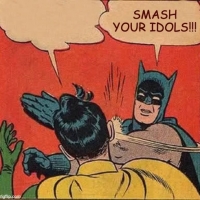DjangoBooks.com
Welcome to our Community!
Categories
- 20K All Categories
- 1.1K General
- 476 Welcome
- 59 Archtop Eddy's Corner
- 146 CD, DVD, and Concert Reviews
- 385 FAQ
- 26 Gypsy Jazz Italia
- 27 Photos
- 202 Gypsy Picking
- 21 Unaccompanied Django
- 15 Pearl Django Play-Along Vol.1
- 17 Gypsy Fire
- 45 Gypsy Rhythm
- 1.4K Gypsy Jazz University - Get Educated
- 130 Gypsy Jazz 101
- 224 Repertoire
- 218 History
- 707 Technique
- 51 Licks and Patterns
- 6 Daniel Givone Manouche Guitare Method Users Group
- 20 Eddie Lang Club
- 1.3K Gypsy Jazz Gear
- 801 Guitars, Strings, Picks, Amps, Pickups and Other Accessories
- 457 Classifieds
- 49 Recording
- 62 Other Instruments
- 18 Violin
- 5 Mandolin
- 22 Accordion
- 7 Bass
- 10 Woodwinds
- 347 Gypsy Jazz Events
- 143 North America
- 109 Europe
- 95 International
In this Discussion
Who's Online (0)
Bop scale
Could anyone enlighten me and tell me what makes up the bop scale?










Comments
http://en.wikipedia.org/wiki/Bebop_scale
The most common example is the passing tone of a natural 7th
on a dominant 7th chord, usually from the root of the chord to a Ma7
to a b 7. The intro to "I'll See U in My Dreams," would be one example.
Just before the rhythm kicks in Django plays F,E,Eb landing on D natural as the band plays Bb6. BTW, this is a very old and commonly used device, Louie Armstrong uses it, [the mixolydian Dom 7th version,
and also the major scale with a b6 passing tone.
In actual usage, [as opposed to the way that theory is taught],
a player might use a fragment of the scale, often with the chord tones. Another example in Django's plaing is in Minor Swing bar 13 of his 1st chorus,
notes are B F# - a G# e eb d -c . Here Django uses bmi7 - e7 in the 1st 3 notes, resolves the "a" to G#, [7th of Bmi to the 3rd of the e7th chord, a common bop device], then uses the chromatic passing tone of eb
to d, [7th of the dom. 7th chord]. There's really a lot going on with these few well placed notes, [kind of a premonition of the bop era]. The F#,
a G# bit is enclosure. The e-eb d - [c natural, in the next bar ], is something that Django used a lot, it ends on the interval of a minor 6th,
[+5 of the e7 chord], before resloving. In general the passing tones are a way to smooth out the scale, it helps to make the scale fit the chords, especially from the stand point of rhythm. The passing tones often fall on the weak beats,
[the + of 4 for example]. Django's instinctive placement of these passing tones are one of the reasons that his solos still sound great!
Bar 30 of Dinah, passing tone on D7, where Django paraphrases the melody
Incidentally, Nuages, of course uses passing tones all over.